Fishing is an art, and choosing the right and specific tools is important for any kind of art. In pursuit of perfection, the right type of rod is the backbone of angling. Therefore, in this article, we will delve deep into the types of fishing rods, and make you aware if you are choosing the specific rod for your specific fishing style.
There are different types of fishing rods, however, here we will cover the major and most important ones.
Keep fishing…
Contents
Spinning Rods
Spinning rods are a popular choice among anglers as compared to other fishing rod types due to their versatility and user-friendly design. They are designed to work in combination with spinning reels, which are mounted on the underside of the rod. Here are some key details about spinning rods and the conditions in which they are best used:
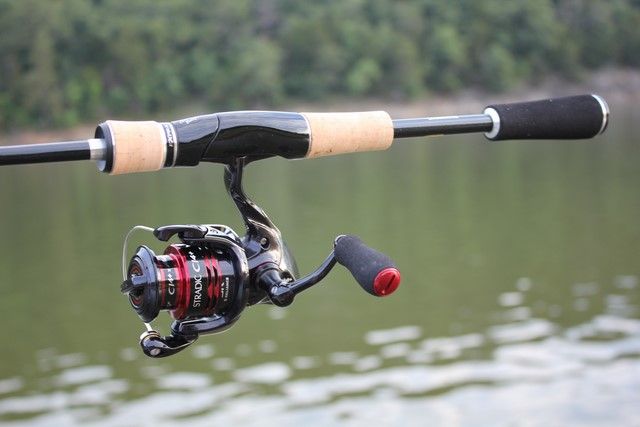
Design and Components
Spinning rods feature several components that contribute to their performance:
Reel Seat: The reel seat is located on the underside of the rod, allowing the spinning reel to be securely attached. It typically consists of a sliding or screw-down mechanism that holds the reel in place.
Guides: Spinning rods have large line guides, including a larger first guide near the reel. These guides help reduce friction and allow the line to flow smoothly during casting and retrieval.
Length and Action: Spinning rods come in various lengths, typically ranging from 5 to 9 feet. The length chosen depends on the fishing technique, target species, and fishing environment. Spinning rods also have different actions, which describe the flexibility or stiffness of the rod. Common actions include fast, medium, or slow, with fast action rods being more sensitive and suitable for light lures, while slower action rods provide more bend and are ideal for fighting larger fish.
Best Conditions for Using Spinning Rods:
Finesse Fishing: Spinning rods are excellent for finesse fishing techniques, where precision and sensitivity are crucial. They allow anglers to cast light lures accurately and feel even subtle strikes from finicky fish.
Light to Medium Tackle Applications: Spinning rods are well-suited for light to medium-weight lines and lures. They provide the necessary sensitivity and control for techniques such as drop shotting, jigging, or fishing with small crankbaits or soft plastics.
Freshwater Fishing: Spinning rods are commonly used in freshwater environments such as lakes, rivers, and streams. They work well for targeting species like trout, panfish, bass, walleye, and other smaller to medium-sized fish.
Precise Presentations: When casting accuracy is essential, spinning rods shine among other types of fishing rods. Their design allows for accurate and targeted casts, making them suitable for situations where anglers need to place their lure in specific spots or around structures, such as docks, weed beds, or tight cover.
Angler Skill Level: Spinning rods are beginner-friendly, making them an excellent choice for novice anglers who are still developing their casting techniques. They are forgiving, with a reduced risk of backlash, allowing beginners to focus on learning the fundamentals of fishing. It is the best fishing rod for the beginner.
Lightweight and Compact: Spinning rods are generally lightweight and more compact compared to other types of rods. This makes them comfortable for extended fishing sessions and convenient for anglers who need to carry multiple rods or travel to different fishing locations.
Baitcasting Rods
Baitcasting rods are a specialized type of fishing rods designed to be used in conjunction with baitcasting reels. They offer enhanced accuracy, control, and power, making them a popular choice among experienced anglers. Here are some key details about baitcasting rods and the conditions in which they are best used:
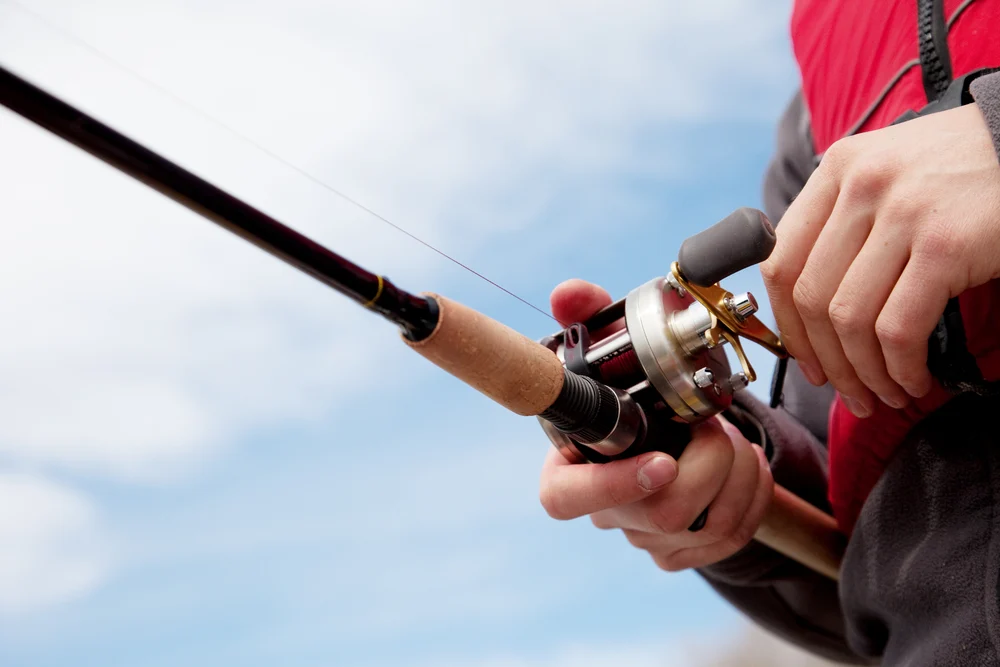
Design and Components
Baitcasting rods share several design elements that contribute to their performance:
Trigger Grip: Baitcasting rods have a trigger grip located on the underside of the rod, providing a secure and comfortable grip for anglers during casting and retrieval. This grip allows for better control, especially when casting heavier lures or when battling larger fish.
Reel Seat: The reel seat on a baitcasting rod is positioned on top of the rod. It securely holds the baitcasting reel in place, ensuring stability and alignment for optimal performance.
Guides: Baitcasting rods typically have smaller line guides compared to spinning rods. These guides are designed to handle heavier lines and prevent them from tangling or getting damaged during the cast.
Length and Action: Baitcasting rods come in various lengths, typically ranging from 6 to 8 feet. The length and action of a baitcasting rod depend on the angler’s preference, fishing technique, target species, and fishing environment. Longer rods provide greater casting distance, while shorter rods offer more accuracy and control. Action options range from fast to slow, with different applications for each.
Best Conditions for Using Baitcasting Rods:
Casting Accuracy and Control: Baitcasting rods excel in situations where casting accuracy and control are crucial as compared to other types of fishing rods. They allow for precise lure placement and are well-suited for techniques such as flipping, pitching, or targeting specific structures or covers.
Heavy Cover Fishing: Baitcasting rods provide the power and control necessary for fishing in heavy cover. They can handle heavier lines and lures, making them suitable for pulling fish out of thick vegetation, submerged logs, or rocky structures.
Large and Powerful Fish: Baitcasting rods are designed to handle heavier tackle and provide increased strength during battles with larger fish species. They offer more leverage and control, allowing anglers to apply more pressure and land fish more efficiently.
Techniques Requiring Lure Manipulation: Baitcasting rods are ideal for techniques that require frequent stops, starts, or sudden changes in lure action among other different fishing rod types. Their direct-drive design and sensitivity enable anglers to manipulate lures, such as jerk baits, topwater baits, or crankbaits, with precision and finesse.
Angler Skill and Experience: Baitcasting rods require more skill and practice to master casting techniques, such as thumbing the spool to prevent backlash. Experienced anglers who have developed their casting proficiency often appreciate the fine-tuned control and precision offered by baitcasting rods.
Heavy Tackle and Large Lures: Baitcasting rods are capable of handling heavier lines and lures compared to spinning rods. They can effectively cast and retrieve larger swimbaits, jigs, or crankbaits, making them suitable for targeting larger predator fish.
Fly Rods
Fly rods are fishing rods type which is designed for fly fishing, a unique angling technique that involves casting lightweight artificial flies using a specific casting method. Fly rods are known for their long, flexible design and are essential for effectively presenting flies on the water’s surface or below. Here are some key details about fly rods and the conditions in which they are best used:
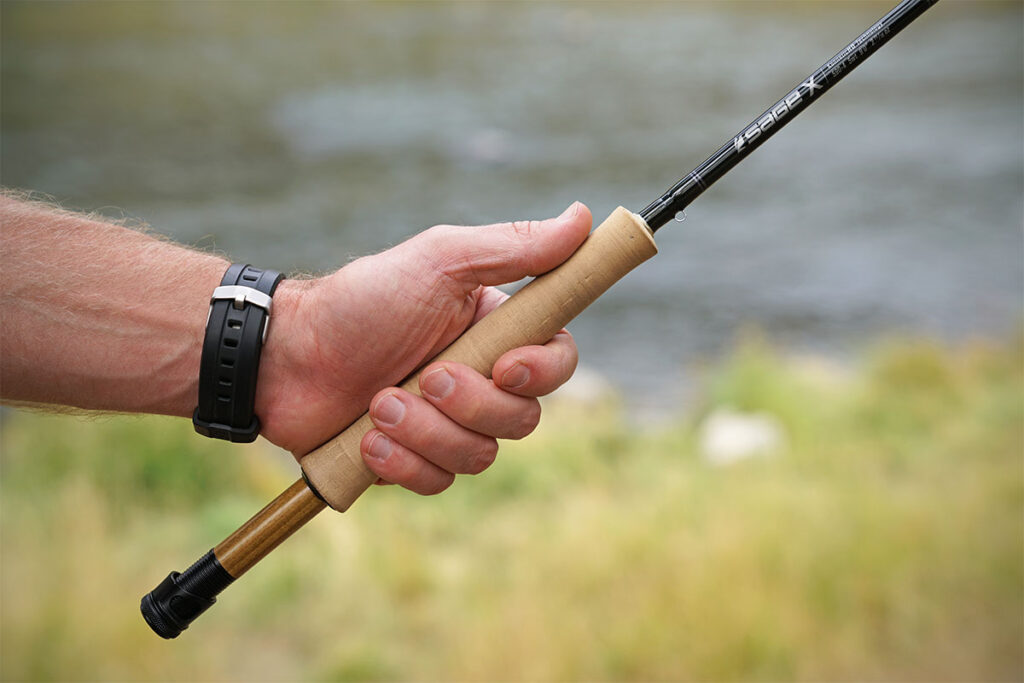
Design and Components
Fly rods possess distinct design features from other types of fishing rods that contribute to their performance:
Length and Flexibility: Fly rods are longer compared to other fishing rods, typically ranging from 7 to 10 feet or more. This length allows for longer casting distances, better line control, and delicate presentations. Fly rods are designed to be flexible, offering a parabolic bend that absorbs the energy of a fish’s movements during the fight.
Line Guides: Fly rods feature specialized line guides, known as snake guides or stripping guides. These guides are typically larger and designed to minimize friction, allowing the fly line to flow smoothly during casting and retrieval.
Reel Seat: Fly rods have a reel seat, typically located at the lower end of the rod, where the fly reel is securely attached. The reel seat provides balance and stability to the rod.
Line Weight: Fly rods are rated by their line weight, indicated by a number ranging from 1 to 12 or more. This rating system ensures proper matching between the rod, fly line, and the target species. Lighter line weights are suitable for smaller fish and delicate presentations, while heavier line weights are used for larger fish and casting larger flies.
Best Conditions for Using Fly Rods:
Fly Fishing Techniques: This type of fishing rod is specifically designed for fly fishing techniques, which involve casting lightweight flies using a fly line and leader. They are essential for presenting dry flies, nymphs, streamers, or other fly patterns with accuracy and finesse.
Delicate Presentations: Fly rods excel in situations that require precise and delicate presentations, such as presenting dry flies on the water’s surface to imitate insects or enticing fish with a subtle nymph or emerger patterns. The flexibility of fly rods allows for gentle landings and natural drifts, increasing the chances of enticing fish to strike.
Freshwater and Saltwater Fishing: Fly rods can be used in both freshwater and saltwater environments. In freshwater, they are commonly used for trout, salmon, bass, and other species. In saltwater, fly rods are employed for targeting species like bonefish, tarpon, permit, or striped bass.
Slow and Still Waters: Fly rods are well-suited for fishing in slow-moving or still waters, such as lakes, ponds, or calm sections of rivers. Their longer length and casting capabilities enable anglers to cover larger areas and reach fish that may be cruising near the surface or holding in specific spots.
Lightweight Flies and Tippets: Fly rods are designed for casting lightweight flies, typically made from feathers, fur, or synthetic materials. They are best used with fine tippets (thin lines) to present the flies delicately and mimic natural behavior.
Pursuit of Selective Fish: Fly fishing is often employed when targeting fish species known for their selectivity, such as trout rising to insects on the water’s surface. The finesse and control offered by fly rods allow anglers to present flies accurately and entice these challenging fish to bite. They are one of the best trout rods.
Telescopic Rods
Telescopic rods are a type of fishing rod characterized by their collapsible design, which allows them to be extended and retracted for convenient transportation and storage. They are popular among anglers who prioritize portability and ease of travel. Here are some key details about telescopic rods and the conditions in which they are best used:
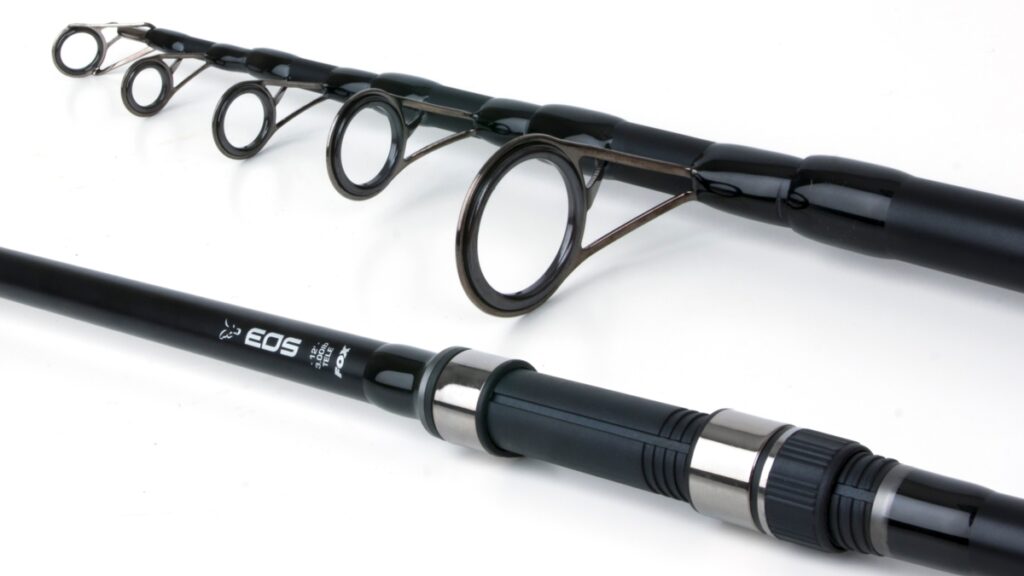
Design and Components:
Telescopic rods possess unique design features that contribute to their performance and portability:
Collapsible Design: The primary feature of telescopic rods is their ability to collapse down to a compact size. The rod segments slide into one another, with the guides and reel seat folding inward, creating a compact and portable fishing rod.
Materials and Construction: Telescopic rods are typically made from lightweight and durable materials such as graphite, fiberglass, or a combination of both. The choice of materials ensures a balance between strength and flexibility.
Length Range: Telescopic rods come in various lengths, ranging from short models around 1 to 2 feet when collapsed to longer options up to 10 feet or more when fully extended. The specific length chosen depends on the fishing technique, target species, and fishing environment.
Best Conditions for Using Telescopic Rods:
Travel and Backpacking: Telescopic rods are particularly suited for anglers who frequently travel or engage in backpacking trips. Their compact size allows them to be easily carried in a backpack, suitcase, or even stored in a car trunk, making them convenient for fishing adventures in remote or hard-to-reach locations.
Hiking and Camping: If you enjoy hiking to fishing spots or camping near bodies of water, telescopic rods offer a practical solution. Their collapsible design allows you to carry a fishing rod without taking up much space in your backpack, making it easier to access fishing opportunities during outdoor activities.
Spontaneous Fishing Opportunities: Telescopic rods are great for impromptu fishing opportunities that may arise unexpectedly. You can keep a telescopic rod in your car or backpack, enabling you to take advantage of fishing spots you come across while exploring new areas or traveling.
Light Tackle Applications: Telescopic rods are typically designed for light to medium-weight lines and lures. They are well-suited for techniques such as spin fishing or bait fishing with smaller baits, making them suitable for targeting smaller freshwater species such as trout, panfish, or bass. It is one of the suggestive rods among the best fishing rods for bass.
Trolling Rods
Trolling rods are a type of fishing rod designed for the technique of trolling, where anglers pull lures or baited lines behind a moving boat. Trolling is a popular method for covering large areas of water and targeting actively feeding fish. Here are some key details about trolling rods and the conditions in which they are best used:
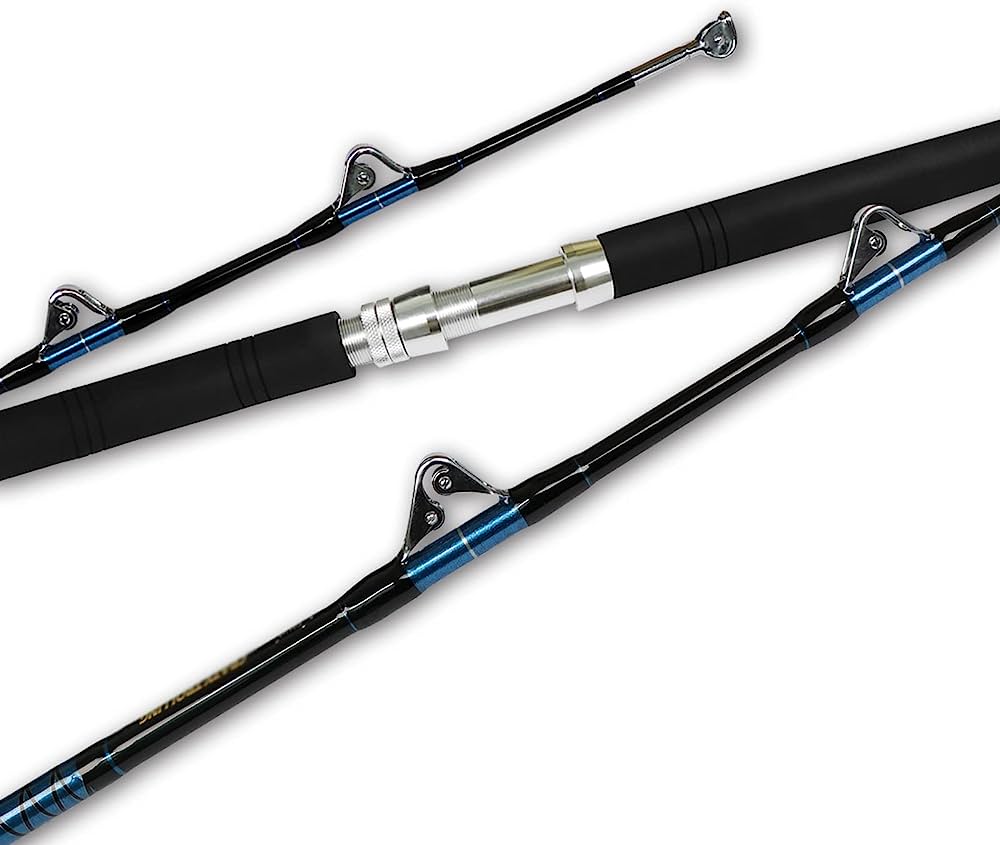
Design and Components
Trolling rods possess specific design features to handle the demands of trolling:
Length and Strength: Trolling rods are generally longer and stronger compared to other types of fishing rods. They typically range from 6 to 10 feet in length, providing the necessary leverage for controlling fish and absorbing the resistance created by the trolling setup.
Power and Action: Trolling rods come in various power ratings, ranging from light to heavy. The power of a trolling rod determines its ability to handle different line weights and the strength needed to reel in larger fish. The action of a trolling rod refers to its flexibility or stiffness, with slower actions being more forgiving and faster actions providing increased sensitivity.
Guides and Roller Tips: Trolling rods feature sturdy guides, often with roller tips, to minimize friction and reduce line wear during the trolling process. The roller tips help prevent the line from tangling or breaking when under heavy load.
Reel Seat and Gimbal: Trolling rods are typically equipped with a reel seat designed to accommodate trolling reels. Some trolling rods also have a gimbal, which is a reinforced section at the rod’s butt end that fits into a rod holder, providing stability and leverage while fighting fish.
Best Conditions for Using Trolling Rods:
Trolling Techniques: Trolling rods are specifically designed for trolling techniques, which involve dragging lures, baited lines, or rigs behind a moving boat. They are suitable for freshwater and saltwater trolling applications, including downrigging, planer board trolling, and flatline trolling.
Open Water Fishing: Trolling rods excel in open water scenarios, such as large lakes, reservoirs, or offshore areas. They allow anglers to cover vast stretches of water, searching for actively feeding fish across expansive areas or along specific depth contours.
Targeting Pelagic Species: Trolling rods are commonly used for targeting pelagic species, such as salmon, trout, walleye, striped bass, tuna, or marlin. These fish often roam in open water, and trolling allows anglers to present lures or bait at the desired depth and speed.
Deepwater Fishing: Trolling rods are effective for fishing at various depths, including deeper water columns. Downriggers or diving devices can be used in conjunction with trolling rods to reach specific depths where fish are holding or feeding.
Controlled Boat Speed: Trolling rods are best used when the boat can maintain a consistent trolling speed. This speed is crucial for maintaining the desired action of lures and presenting them effectively to trigger fish strikes.
Large Fish and Heavy Tackle: Trolling rods are designed to handle heavier lines and larger lures. They provide the power and strength necessary to land larger fish, making them suitable for trophy fishing or targeting species that grow to substantial sizes.
Summary
There are a lot of different types of fishing rods, each according to fishing style. Here we have tried to cover the most commonly used types of fishing rods in depth. But this article was created with the purpose of giving a full grasp of fishing rod types to the reader, so here is a table that summarizes the key features of the different types of fishing rods.
| Type of Rod | Action | Power | Length | Line Weight | Material | Use |
| Spinning Rod | Medium | Medium | 6-10′ | 6-12 lb | Fiberglass or graphite | General-purpose fishing |
| Baitcasting Rod | Fast | Heavy | 6-8′ | 12-20 lb | Graphite | General-purpose fishing |
| Fly Fishing Rod | Fast | Light | 8-12′ | 4-8 lb | Fiberglass or graphite | Fly fishing |
| Trolling Rod | Slow | Heavy | 8-12′ | 12-20 lb | Fiberglass | Trolling |
| Bottom Fishing Rod | Medium | Medium | 6-8′ | 6-12 lb | Fiberglass | Bottom fishing |
| Telescopic Rod | Medium | Medium | 2-7′ | 6-12 lb | Fiberglass or graphite | General-purpose fishing |
| Surf Rod | Slow | Heavy | 10-12′ | 20-30 lb | Fiberglass | Surf fishing |
| Ice Fishing Rod | Slow | Medium | 6-8′ | 4-8 lb | Fiberglass | Ice fishing |
Now, if you have chosen the type of fishing rod for yourself, it is time to look for the best brands for fishing rods. Never compromise on your rod because it is the key to having the best fishing experience.

Hi, I am David. I have founded THE FISHER CAST because I believe everybody deserve to do fishing smartly. I with my team are here to make this possible for our present and future generations by giving the best hands on practical experiences and reviews.

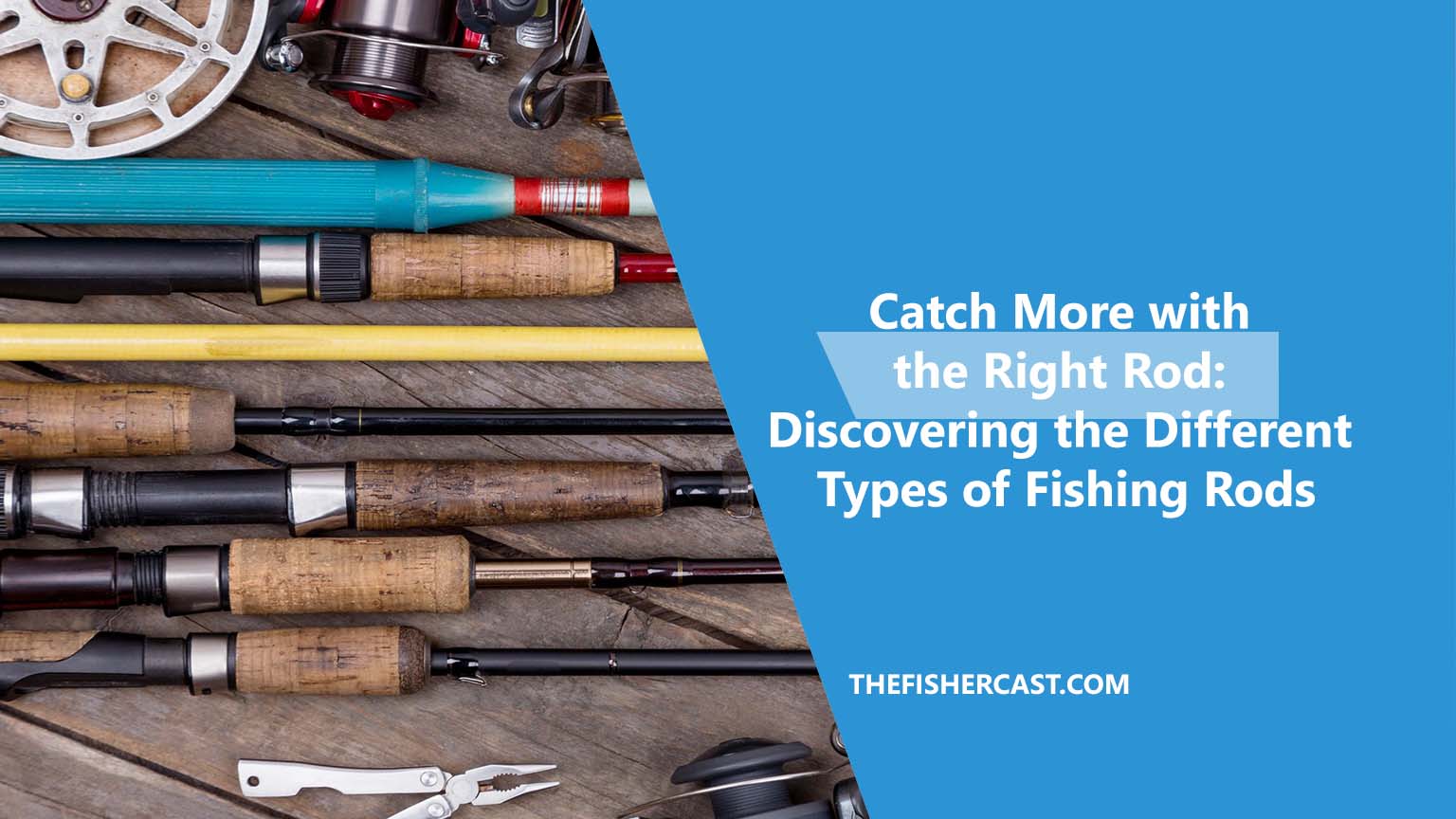
![10 Best Spinning Reels Under $100 [2023 Reviews] Best Spinning Reels Under 100](https://thefishercast.com/wp-content/uploads/2022/01/Best-Spinning-Reels-Under-100-150x150.webp)
![10 Best Trout Spinning Reels [Reviews and Buying Guide 2023] Best Trout Spinning Reels](https://thefishercast.com/wp-content/uploads/2022/02/Best-Trout-Spinning-Reels-150x150.webp)
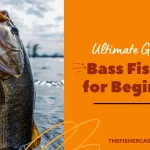
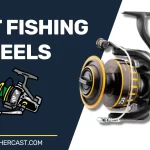

![10 Best Spinning Reels [2023 Reviews] Best Spinning Reels](https://thefishercast.com/wp-content/uploads/2022/01/Best-Spinning-Reels-150x150.webp)